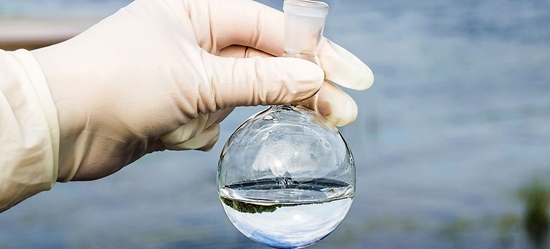Reduction of metal pollutants in water and soil resources with composite nano-structure
Researchers at Tarbiat Modares University have taken a step towards eliminating contaminants in water and soil resources by providing a simple and inexpensive way to build a nano-structured compound. By injecting the produced nano-structure into the soil environment, they were able to reduce the mobility of metal contaminants and release them into the environment, making it possible to use the contaminated site for agricultural use.

Researchers at Tarbiat Modares University have taken a step towards eliminating contaminants in water and soil resources by providing a simple and inexpensive way to build a nano-structured compound. By injecting the produced nano-structure into the soil environment, they were able to reduce the mobility of metal contaminants and release them into the environment, making it possible to use the contaminated site for agricultural use.
Dr. Ahmad Jamshidi, TMU faculty member, stated about the achievements of this research: The present project has been done with a new approach in order to improve the environment and manage places contaminated with heavy metals. In this project, in the first step, environmentally friendly nano-structure was prepared in a simple and inexpensive way. Then, its efficiency for removing chromium contaminants in the water environment and immobilization and reducing the distribution risk of it in soil environment were evaluated. The produced nano-structure is easily separated from the environment due to its magnetic properties and produces less secondary waste compared to some other adsorbents. This method is important because in some cases it is not possible to clean and purify soils contaminated with heavy metals. Therefore, it will be very important to use a method that can improve soil quality simultaneously and on the site. Jamshidi added: «By injecting the produced nano-structure into the soil environment, while reducing the mobility of metal contaminants and the risk of their release into the environment, it is possible to use the contaminated site for agricultural uses.» The output of the present study confirms this claim to some extent, although more research is needed. Nano-magnetic MnFe2O4 was prepared and examined to immobilize Cr (VI) in the soil. According to the results of scanning electron microscopy (SEM) and X-ray diffraction (XRD) the formation of nano-magnetic MnFe2O4 with the particle size of less than 200?nm was demonstrated. Compared with the untreated soil, the leach-ability of Cr (VI) was reduced from ۷۰.۹۵٪ to ۴.۲۲٪ through toxicity characteristic leaching procedure (TCLP) at a dosage of ۲؟ g/L of nano-particles and ۱۹۲؟ h remediation time. At the same condition, the physiologically based extraction test (PBET) human bio-accessibility of chromium was reduced from ۸۶.۷۶٪ to ۴.۴۲٪. Moreover, the plant bio-availability of hexavalent chromium (using EDTA) was reduced from ۸۳.۷۲٪ to ۵.۵۳٪. According to the sequential extraction procedure (SEP) the loosely bounds Cr (۹۰.۲۸٪) was converted to the relatively strong bound (Fe-Mn oxides fraction, ۹۲.۰۹٪) revealed the significant decrease in risk of release and availability of chromium after immobilization procedure. Further, results of column experiments of Cr (VI) elution revealed that almost all of the water-soluble chromium was converted to the associated synthesized nano-particles phase. Overall, the present study proved that nano-magnetic MnFe2O4 significantly enhanced the hexavalent chromium immobilization through a decrease in leach-ability, plant bio-availability, human bio-accessibility, and risk of release. The outputs of the present project have been accepted or are in the judging stage in the best specialized journals. The use of soil pollution removal methods, including the immobilization of heavy metals as one of the most important and innovative methods of improving soil quality, in situations where soil cleaning is not possible, is important and necessary. This approach can create a drastic change in the management of contaminated sites. This compound can be used as an adsorbent in drinking water treatment packages. Since in some parts of Iran, heavy metal-contaminated water is used for drinking and agriculture, this achievement can be appropriate and useful for improving water quality in those areas. For industrial production, the need for suitable workshop space and equipment is felt. Product marketing also requires the presence of experts in this field. He added: «If the project is financed, we intend to work on the growth and development of agricultural products in soil contaminated with metal contaminants in the presence of a stabilizing compound to ensure the growth of agricultural products and the prevention of hazardous contaminants transfer to those products in the presence of such a combination. This research is the result of Behzad Eyvazi, a graduate student of Tarbiat Modares University's mineral processing department under the guidance of Dr. Ahmad Khodadadi and Dr. Ahmad Jamshidi Zanjani, as well as part of a project supported by the Presidential Researchers Support Fund. This article, entitled» Immobilization of hexavalent chromium in contaminated soil using nanomagnetic MnFe2O4 «, has been accepted in» JOURNAL OF HAZARDOUS MATERIALS" with an impact factor of 7.65.
